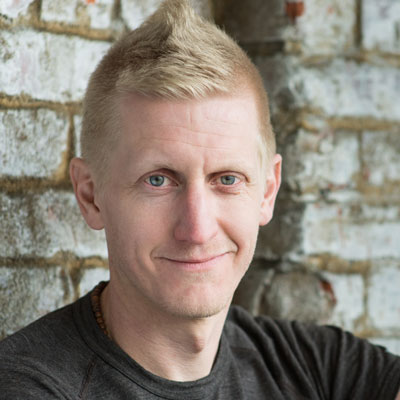Enjoy this letter? Get next Sunday's sent straight to your inbox.

 Ink and Feet
Ink and Feet


I did something really bad this week. In fact, it's the worst thing I've done all year. I got on a plane, and flew from the middle of Africa to Los Angeles. Why was that so bad?
The pollution.
Flying is the single worst activity we can do when it comes to sustainability, and it's not even close. In fact, it's so bad that it's hard to even fathom. And even when we do wrap our heads around it, it's so unsettling that usually, it just feels easier to just to pretend it doesn't exist, and not talk about it.
But, as you know, that's not really what we do around here. :)
So let's take a closer look.
Throughout the course of my year, I'll produce about 4 tons of CO2 pollution, not including flying. That includes all the places I drive, all the things I eat, all the electricity I use, hot water, A/C, heat, all the stuff I buy, everything.
Ok, so that's my whole year. We have a benchmark. How bad is flying?
I produced the same amount of CO2 pollution yesterday. For two of those tons, I was sleeping!
With my lifestyle, it gets worse, fast. In fact, with the places I plan to live and work this year, I'll dump close to 30 tons of bonus CO2 into the atmosphere, just from flying. That's as much as 6 average households in Europe, and 7 times as much as everything else I do this year, combined!
Yikes.
So what's to be done?
The short answer is to buy the best CO2 offsets I can. CO2 offsets are a bit of a complex beast (more on that if you're geekily inclined below), but roughly, I pay a little money to ensure that a specific number of tons of CO2 that were going to hit the atmosphere never get there.
It's a simple system, easy to do, and staggeringly affordable.
Here's how I do it, in less than 60 seconds.
That's it. :)
In fact, it's so simple, cheap, and impactful that I've come to a bit of a moral conclusion:
If we can afford to fly, we can afford to offset our CO2 pollution.
Every one of us. Every flight.
That's really the bottom line.
So today, I'm going to ask you for a personal favor. From now on, every time you fly, buy offsets.
Do it for me. Do it for my nieces. Do it for the people whose homes in the Pacific Islands, Coastal Africa, and New Orleans are being overwhelmed by the rising ocean levels. Do it for our grand and staggering forests. Do it for yourself, and everyone you care about.
We humans, like frogs in slowly heating water, are naturally bad at handling large, slow-changing problems. But this one we know about, and the solution is so simple and so easy it's insane not to do it.
So let's take on our shifty biology, look a big issue in the eye, and do our part. We - and our descendants - will be glad we did. :)
If you're a bit geeky, and want to dive deeper into the rabbit hole, I've put some details of carbon offsets, and the rest of the story below. Feel free to skip it if it's not your cup of tea. You already know all the important stuff.
The best thing I've read all week is, as usual, at the very bottom.
Geeky stuffs:
Alright, let's go down the rabbit hole. Because it turns out when you look more closely, things get a bit trickier. You see, despite being the right thing to do, carbon offsets by themselves don't necessarily reduce the amount of CO2 in the atmosphere.
To understand why, we have to take a quick look at the carbon cycle. The earth is filled with giant deciduous forests that breathe in CO2 to grow in spring, and then release lots of CO2 as the leaves decay in fall, moving massive amounts of CO2 in and out of the air.
This kind of movement (assuming the forests stay the same size), averages out to be neutral, year after year. The same thing happens in swamps, bogs, lakes, oceans, and even everyday dirt. It's a normal cycle of carbon in our atmosphere, and overall, over years and decades and millennia, CO2 levels stay steady.
Flying, however, is different. When we fly (and drive gas-powered cars, use coal-fired plants, or burn natural gas), we take carbon that was stored deep underground and was never a part of that cycle, and add it to the atmosphere.
Year-over-year, that means there's more of it in the air, and it's causing all sorts of troubles, including the rising oceans (thanks to melting glaciers) and shifts in climate.
The reasonable thing to do then, is to pull the carbon we added back out - which brings us to carbon offsets. But there's a catch.
At the moment, most carbon offsets are things like converting someone from burning coal for energy (which adds CO2 to the atmosphere) and to using solar cells (which don't.)
Offsets like these mean that overall, we're adding less CO2 to the atmosphere, which is good. But it does not mean that any of the CO2 I dumped in by flying from Rwanda to LA got pulled back out.
However, there's another kind of offset - called sequestration - that actually pulls CO2 out of the air, and shoves it deep underground. It's physically the opposite of what we're doing by burning oil and coal, and it's one of the best hopes we have in fighting climate change.
The trouble is that the idea is still pretty new, most of the projects are experimental, and as of today, none of them can pull out CO2 at a scale big enough to make a difference.
Which brings us back to those offsets I said up above we had a moral obligation to buy. If they're not pulling carbon out of the air, why buy them?
The short answer is that by buying them, we're investing resources into figuring out large-scale sequestration, as well as preventing more CO2 from hitting the atmosphere.
We're showing companies, governments, and investors that everyday people like us are serious about taking responsibility for our actions, and we're willing to back it up with cash.
Large scale carbon sequestration will be an industry - a big mix of companies, research institutions, products, and physical infrastructure. And just like all the other industries we've built in the history of our civilization, it will take time, money, and sustained interest.
Buying carbon offsets, every time you fly, adds to each one of those things. It helps us, as a society, build the tools we'll need to solve this problem for real.
I'm committed to offset my travels, and to contribute to a better world with the resources I have. Join me. Let's do this together. :)
-Steven
p.s. Don't believe me on this future and technology and investment stuff? That's cool. Here's the best thing I read all week - it's what Bill Gates thinks about the future.
[1] Check my math for Steven's Rough Rule of Offsets:
Enjoy this letter? Get next Sunday's sent straight to your inbox.
